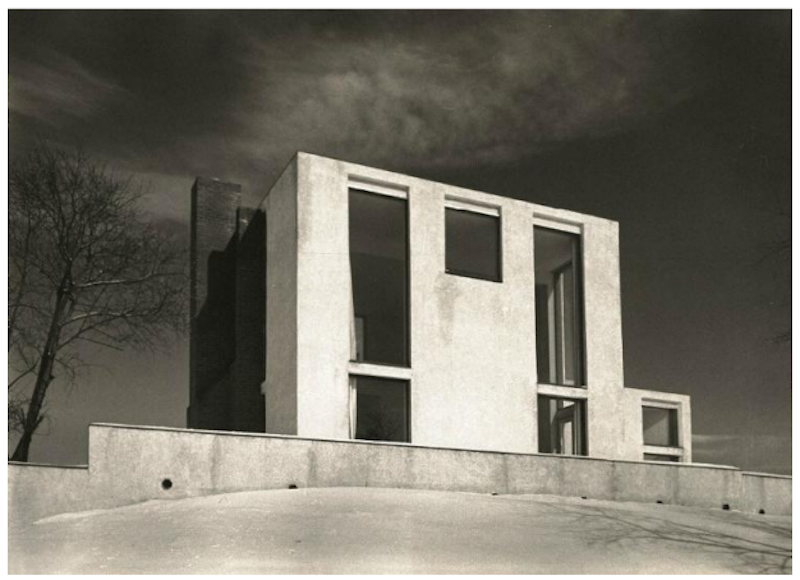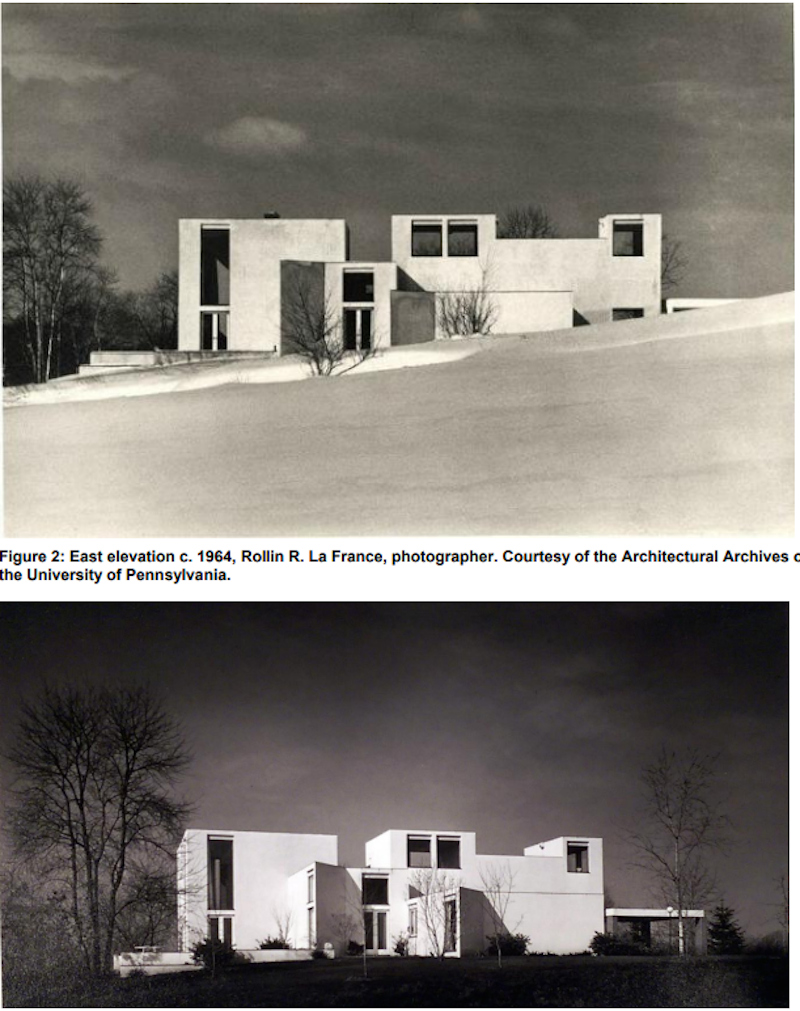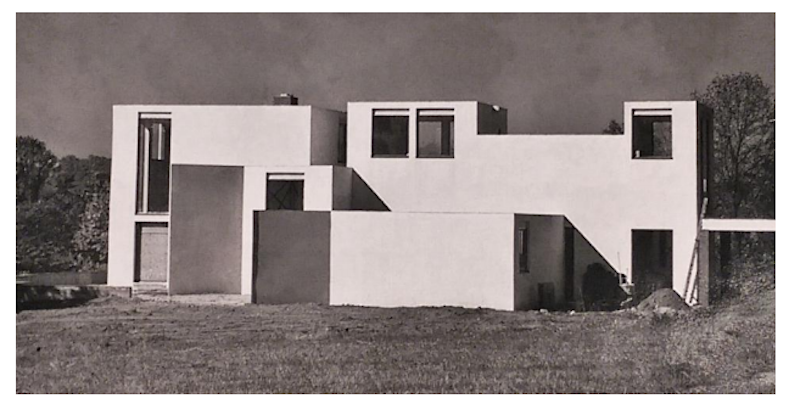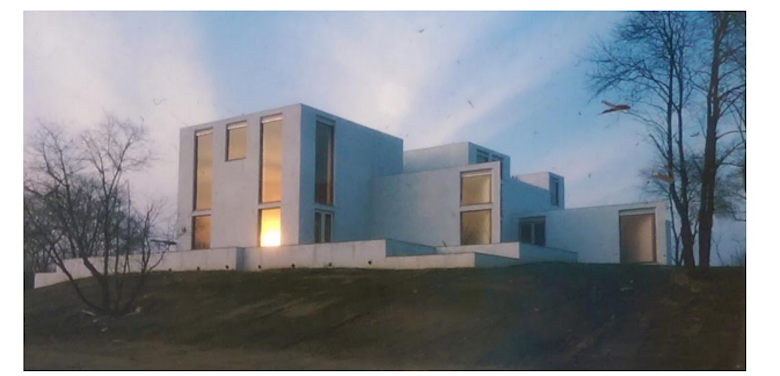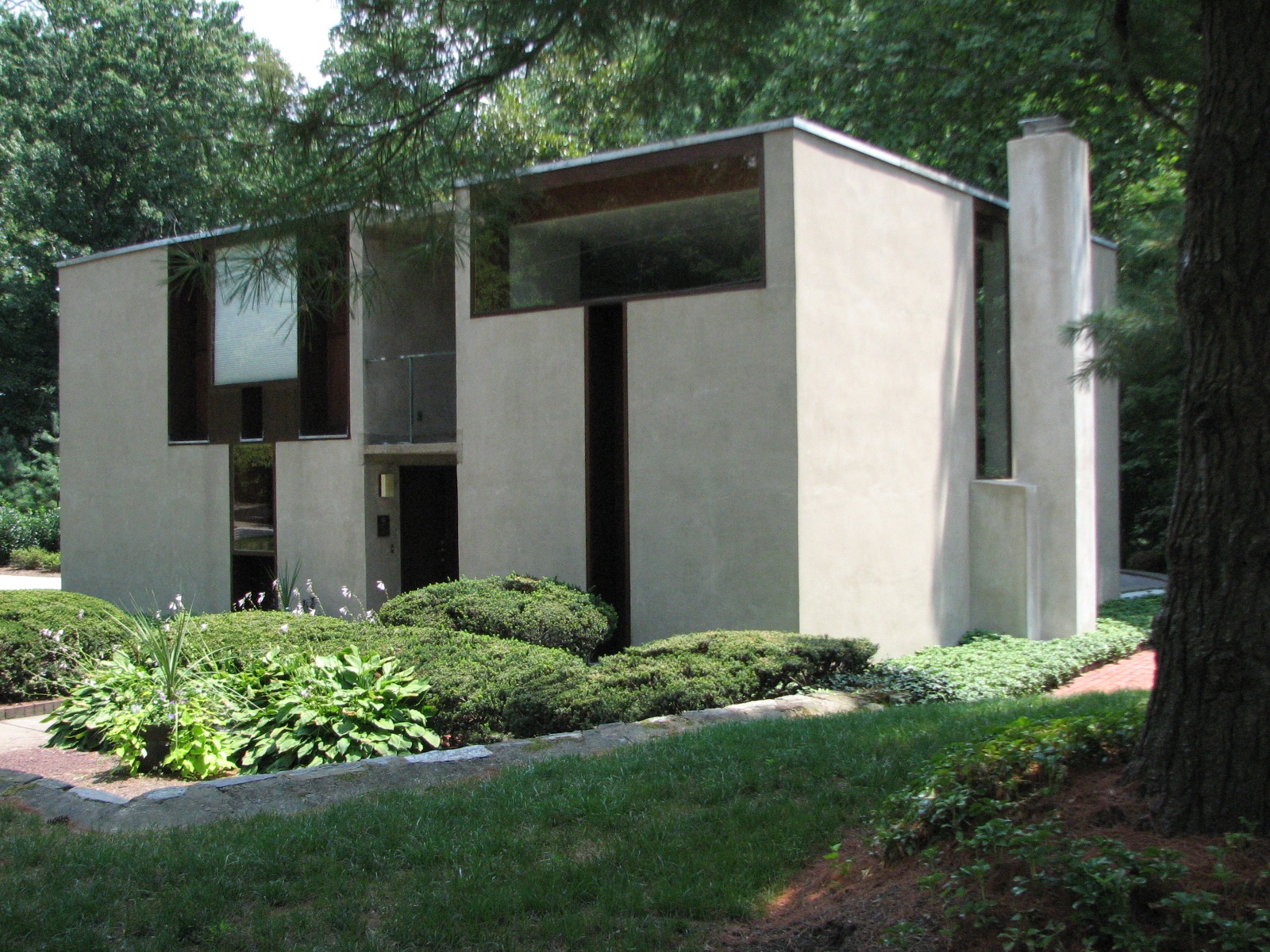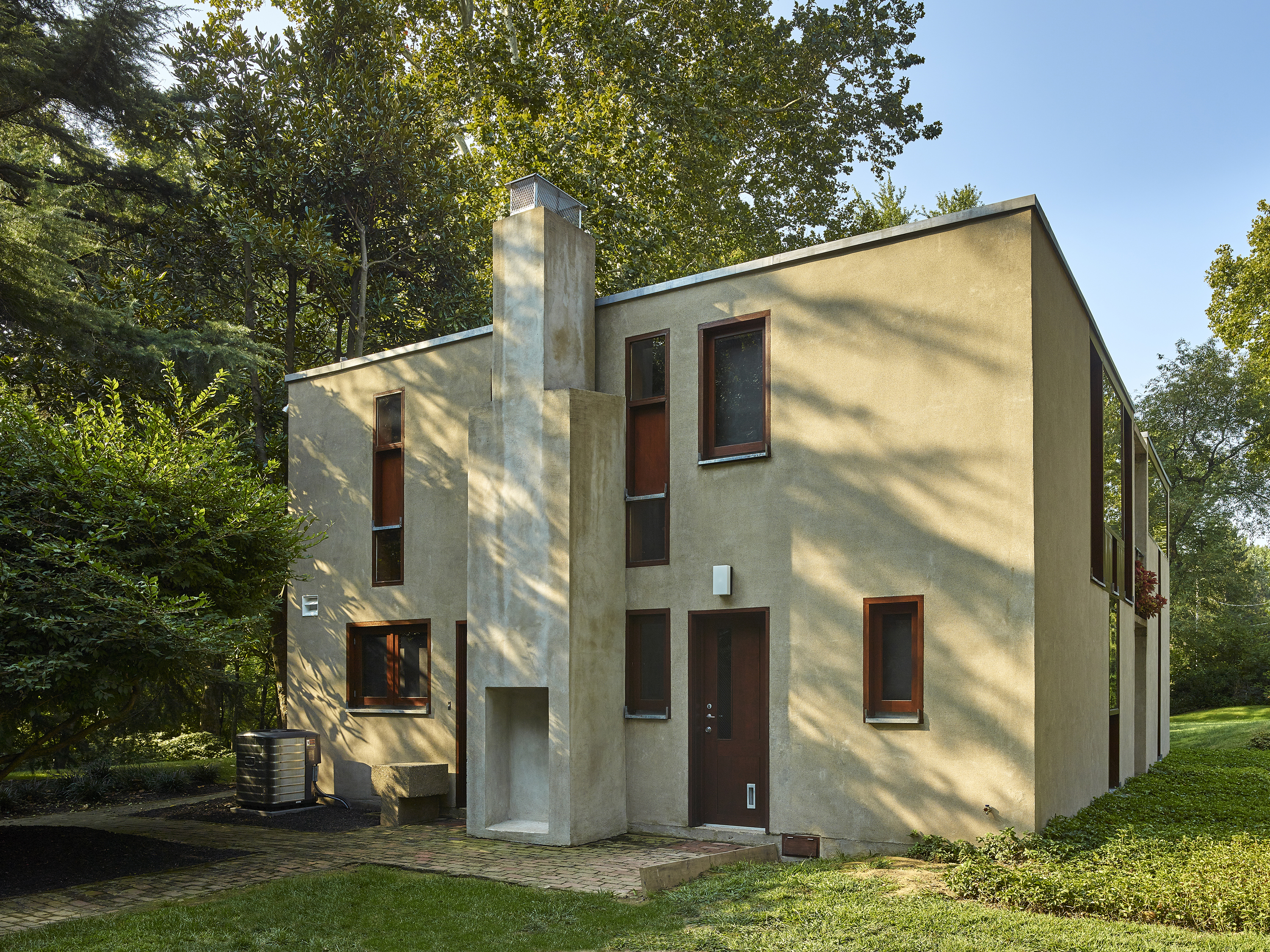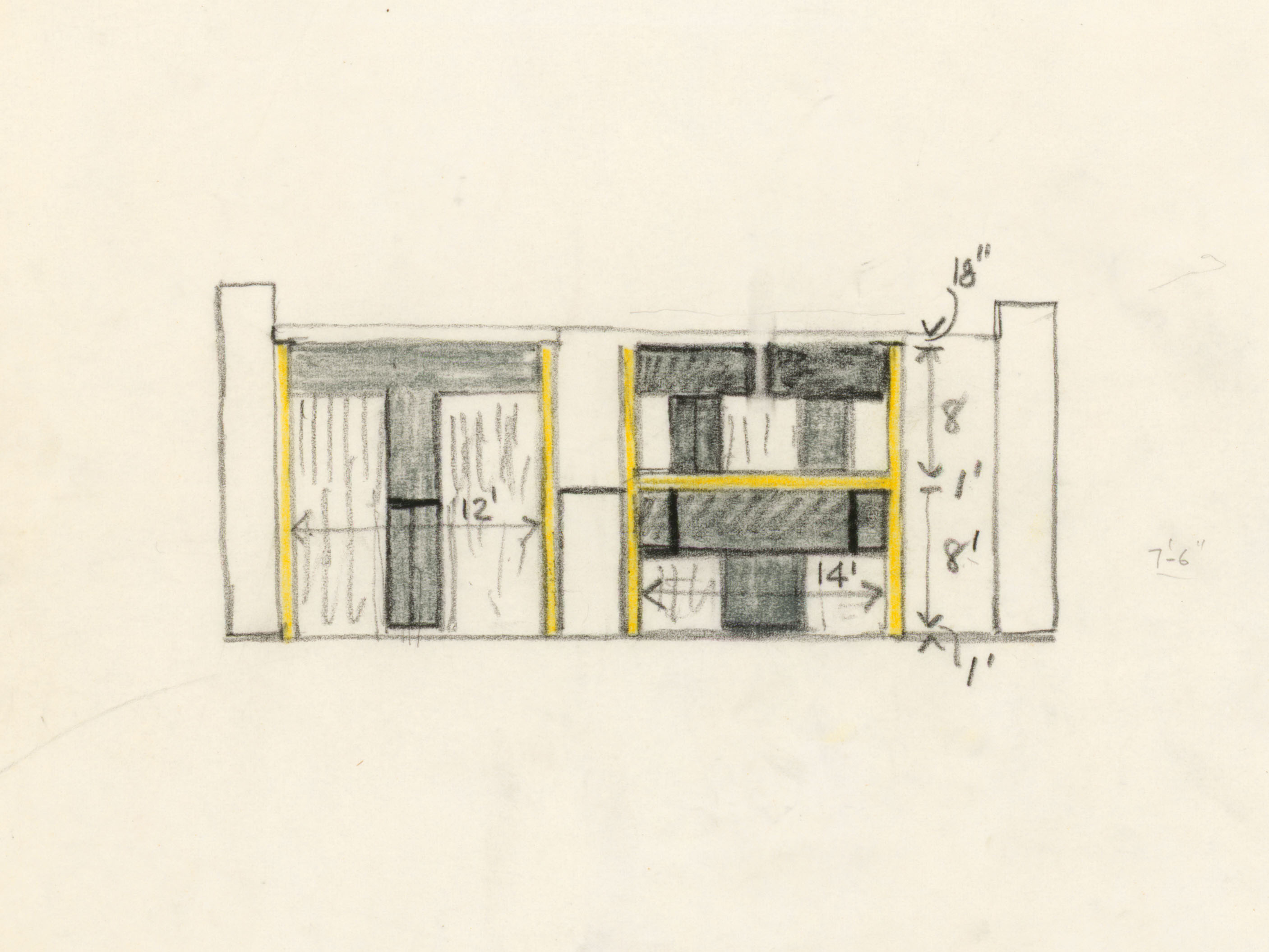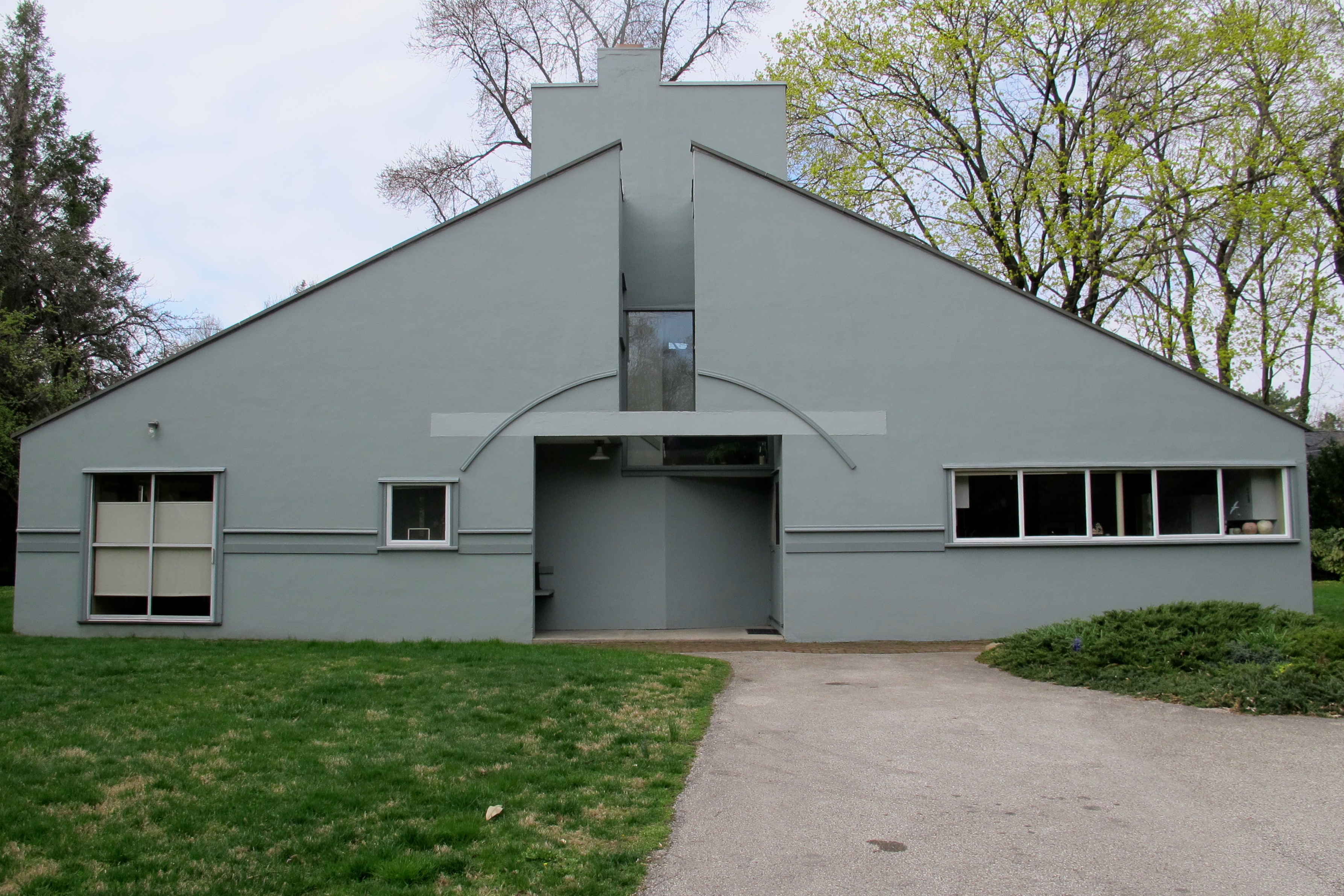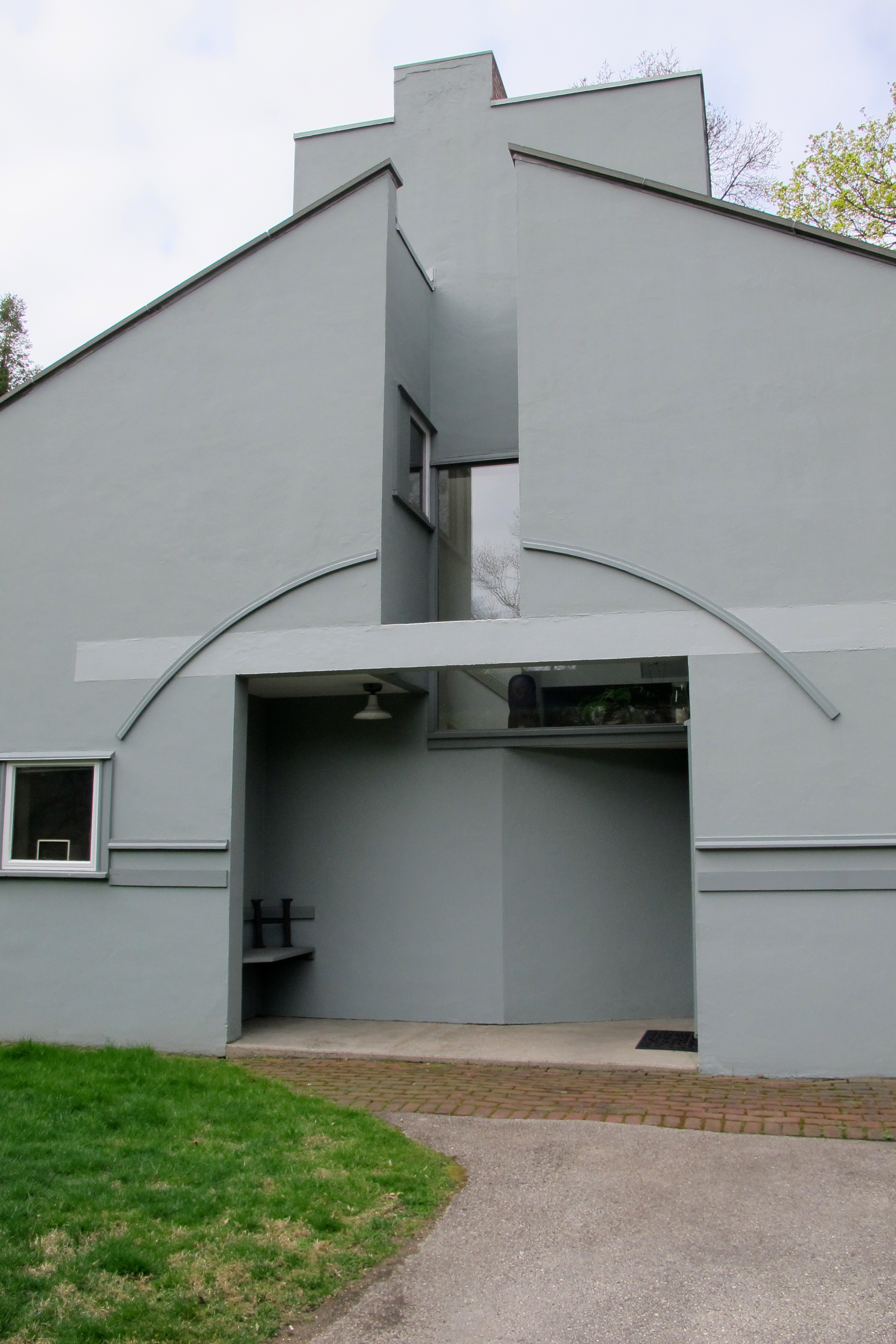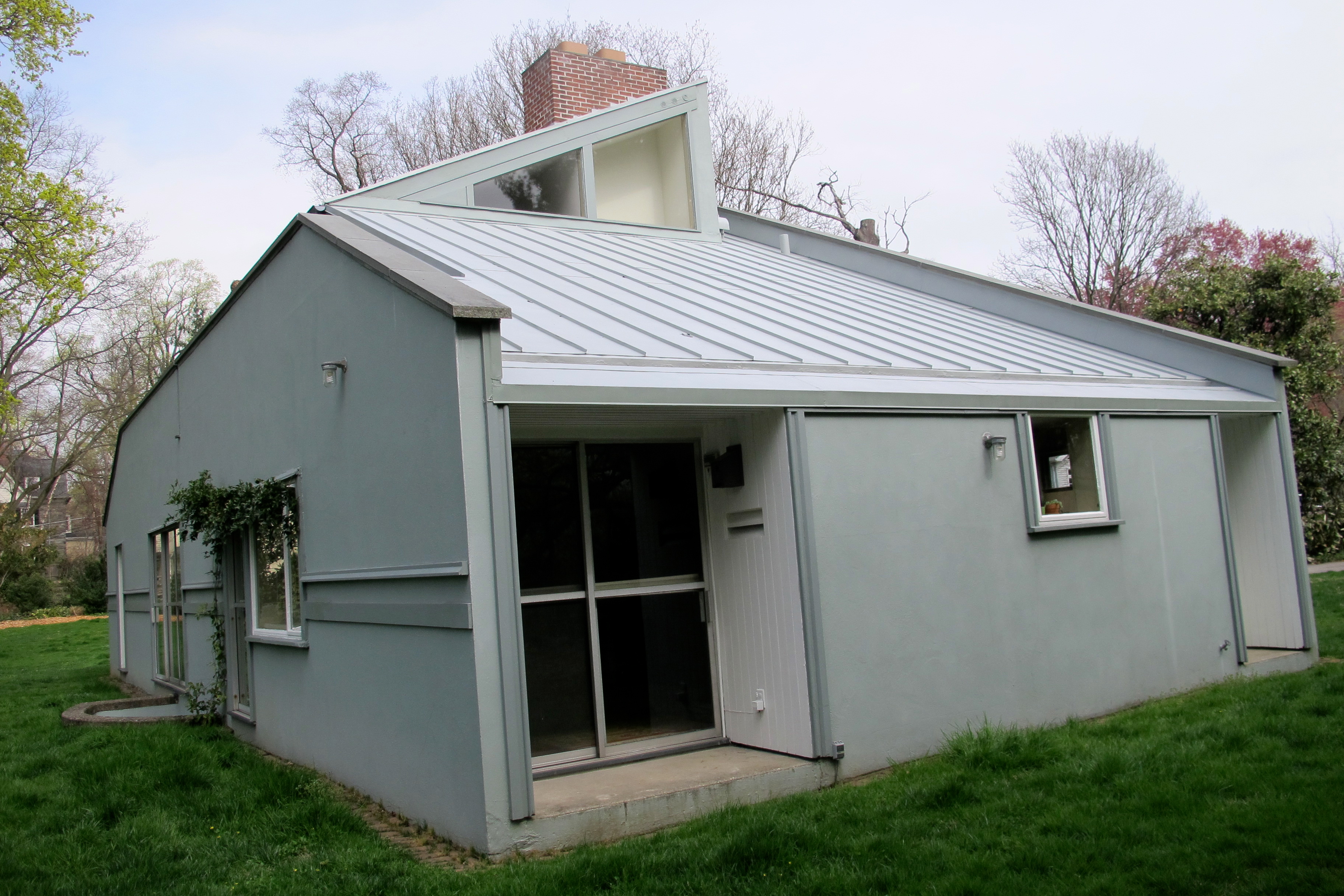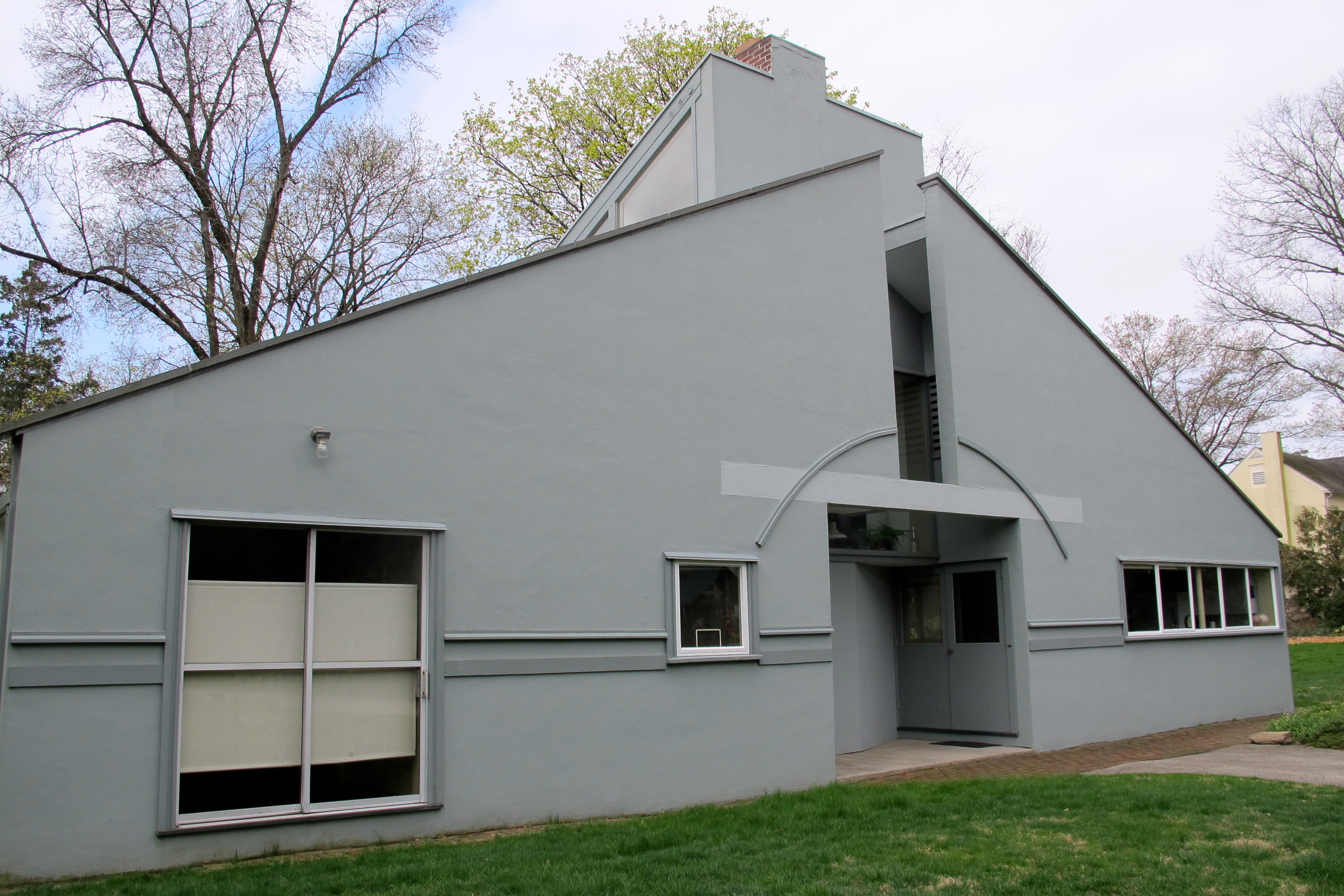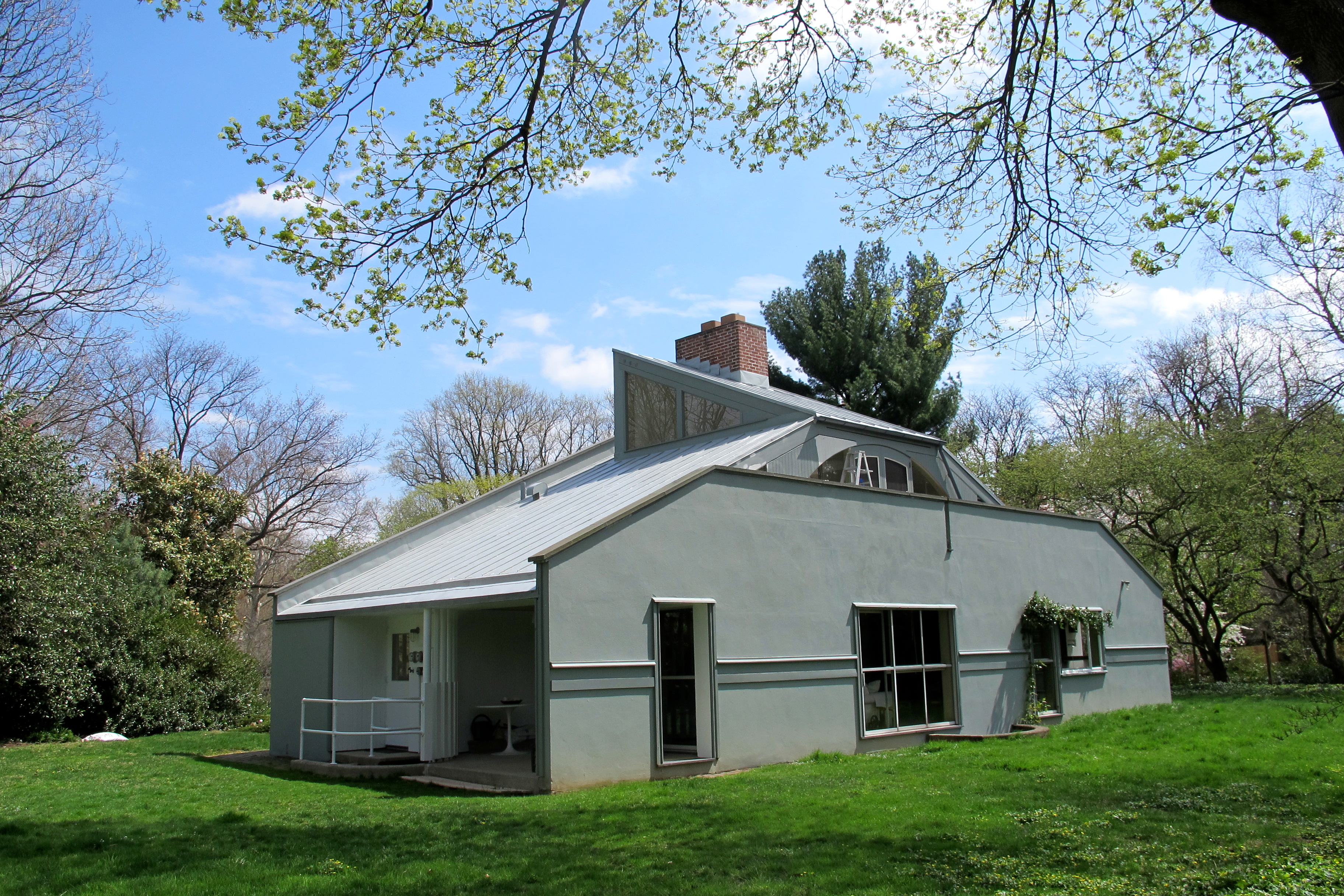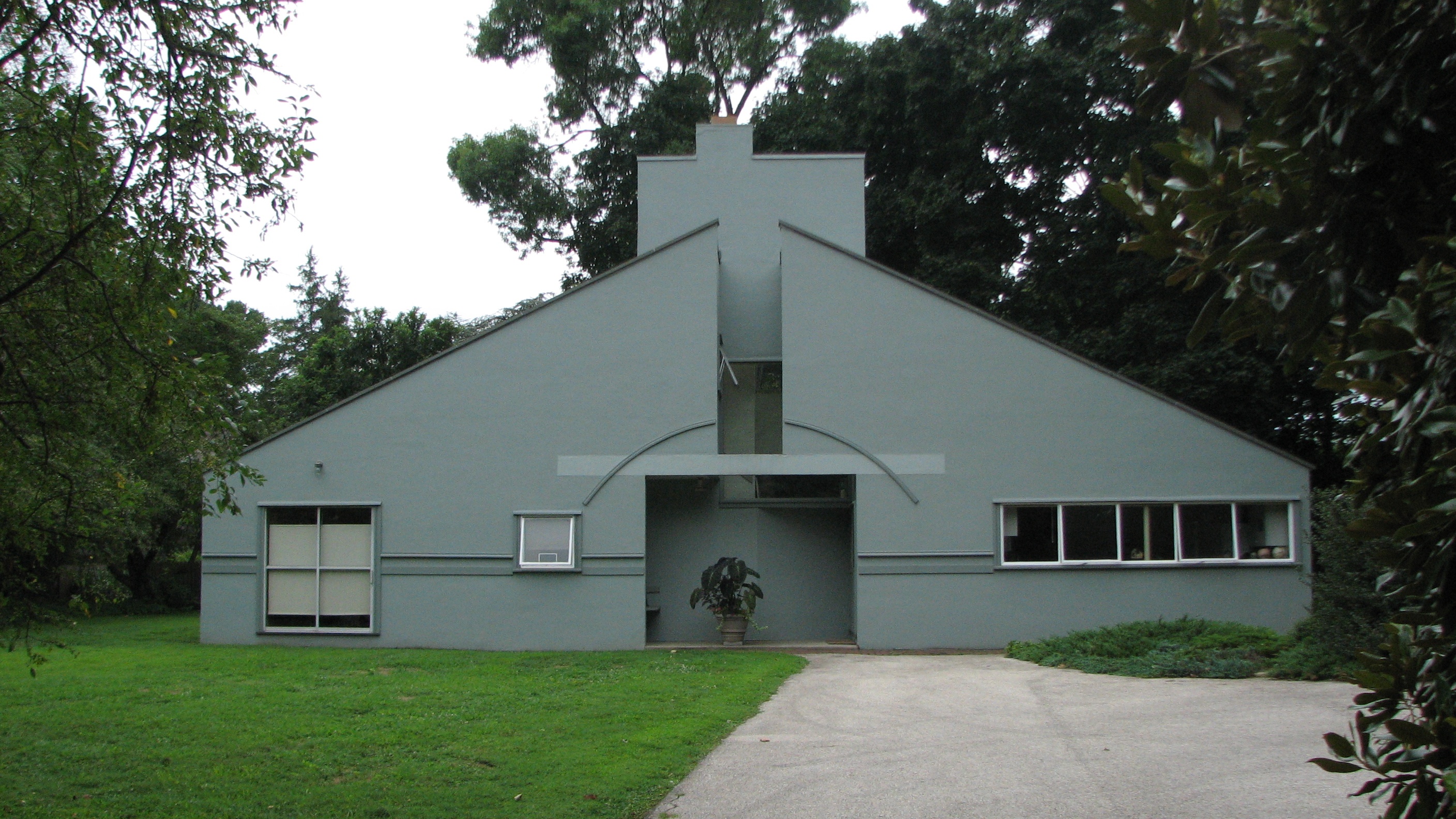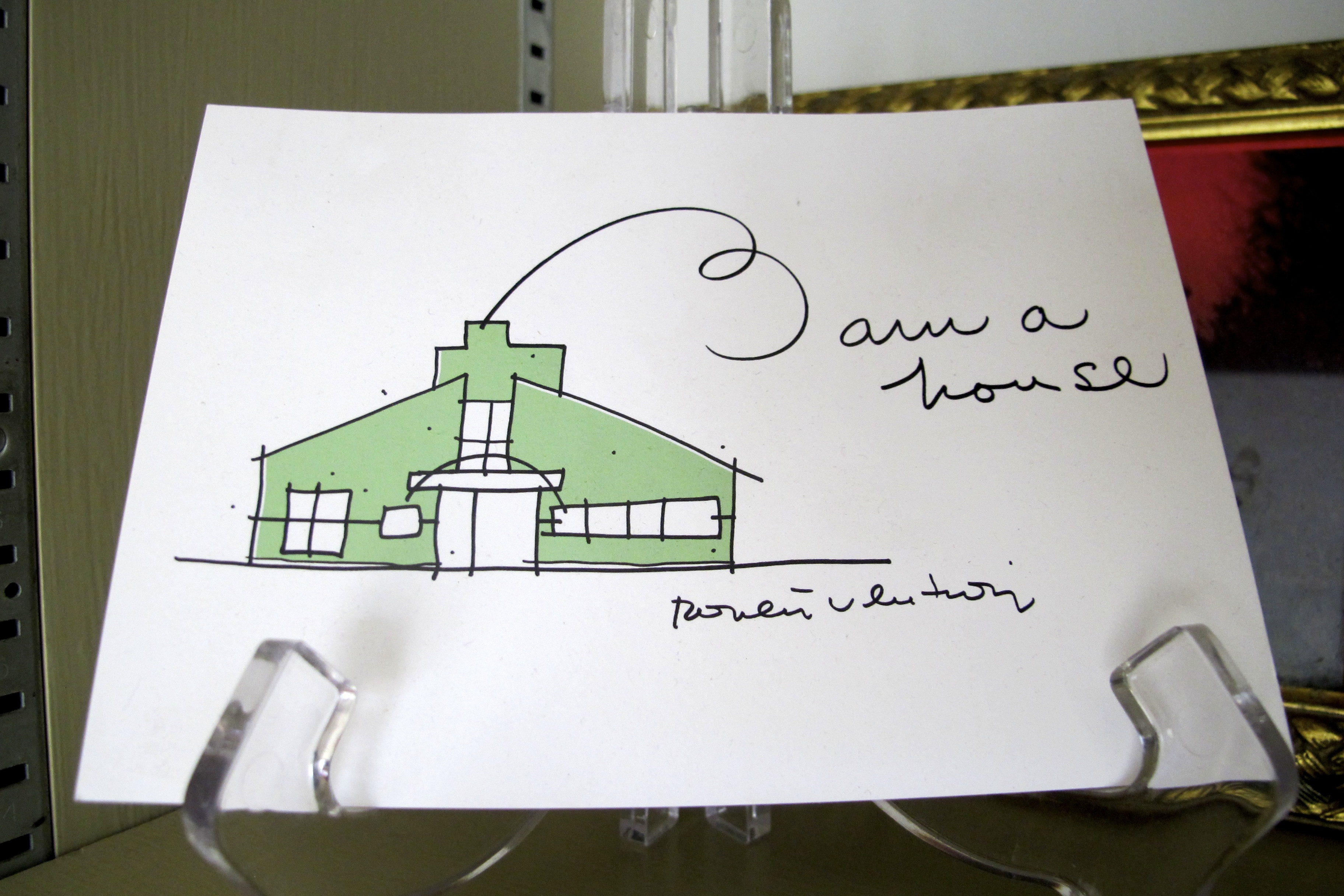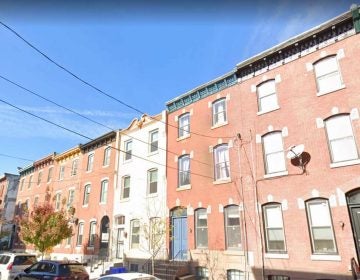Chestnut Hill’s modernist trio, fully historically protected in 2017
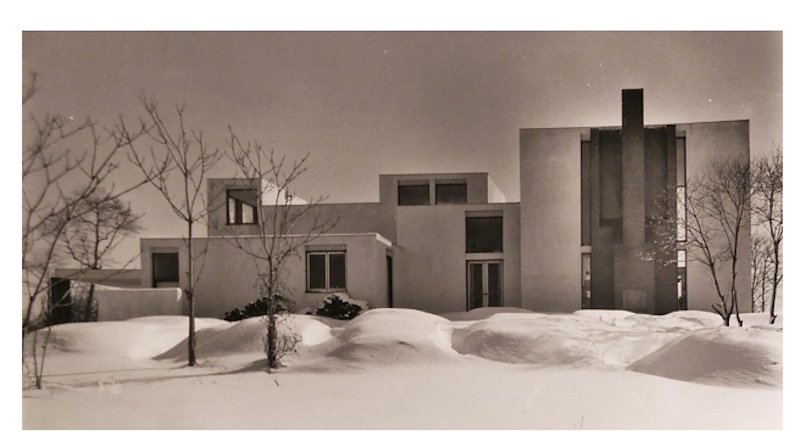
Even in a city known for its architectural heritage and historic buildings, Chestnut Hill stands out. Long one of the wealthiest neighborhoods in Philadelphia, this sylvan community is home to rambling stone mansions, intact lines of cozy rowhomes, and a bustling commercial corridor.
But even in this setting–especially in this setting–three modernist masterpieces stand out.
In the early 1960s, three of the city’s most influential architects designed an informal trio of small, eccentric homes in the midst of the archaic opulence of Chestnut Hill. All of them were inhabited by single women, furthering their connection.
In recent years all three have been added to the local register of historic places: Louis Kahn’s Margaret Esherick House, Robert Venturi’s Vanna Venturi House, and in 2017 the Dorothy Shipley White Residence, designed by Romaldo Giurgola and Ehrman B. Mitchell.
All of these men were associated with the University of Pennsylvania and what became known as “The Philadelphia School” of modernist architecture. (Venturi is a bit of an uneasy fit, being the father of postmodern architecture, but allow PlanPhilly some journalistic latitude.)
“These are shocking houses to be built in a traditional community,” said Lori Salganicoff, executive director of the Chestnut Hill Conservancy and Historical Society. “These were wonderful modern buildings that are iconic in this community. And these are internationally important houses. People come from all over the world to Philadelphia to visit them.”
The Chestnut Hill Conservancy was a driving force in the historic preservation of the three houses. Salganicoff said that the blueblood community at the edge of the city loves the old school feel of their bluestone sidewalks, tree-lined streets, and homes of Wissahickon schist–but they also appreciate newer structures as long as they are designed with care.
“My recollection is that these houses were seen as surprising and disturbing to some,” said Salganicoff, but the community generally trusted that the world-renowned architects knew what they were doing.
Indeed, the Conservancy itself mustered a 1970 panel (“An Evening of Speculation”) for the three men to discuss building modernist structures in a traditional community.
The Conservancy recruited allies in their preservation effort, including The Preservation Alliance of Greater Philadelphia and Docomomo, an international non-profit devoted to Modernist architecture.
“They are reflective of an era when that style was popular and a neighborhood where sponsors had the means to hire the leading architects of the day,” said Paul Steinke, executive director of the Preservation Alliance. “Those three are particularly interesting because they were all built and designed within a few years of each other by internationally notable architects who practiced locally. And all three were occupied by single women.”
The Venturi house was designed for his parents, but his father died before it was completed and only his mother lived there. Kahn designed a one-bedroom for local bookseller Margaret Esherick. The home designed by Mitchell and Giurgola, and the last to be historically protected, was commissioned by wealthy widow Dorothy Shipley White.
Salganicoff notes that the three homes have only recently become eligible for historic preservation, as they only passed beyond the necessary 50 years of age earlier this year.
Dear reader, we will get straight to the point: Today we ask you to protect PlanPhilly’s independent, unbiased watchdog coverage. We depend on you to bring the news that you value and spread voices across the city. This holiday season, please give the gift of public and accessible media for all by making a tax-deductible donation during our once-a-year membership drive. Thank you for making us your go-to source for news on the built environment eleven years and counting.
WHYY is your source for fact-based, in-depth journalism and information. As a nonprofit organization, we rely on financial support from readers like you. Please give today.



